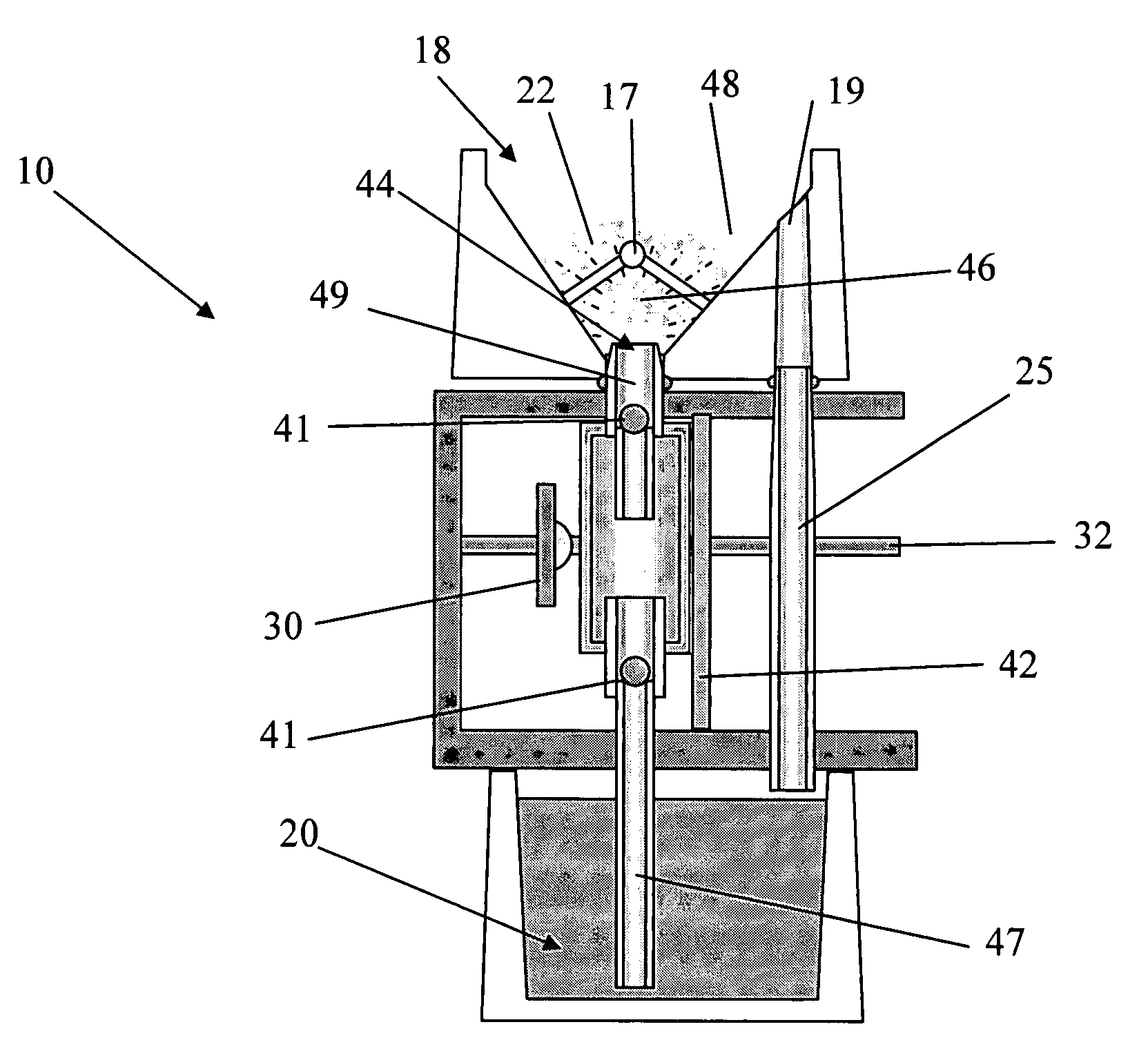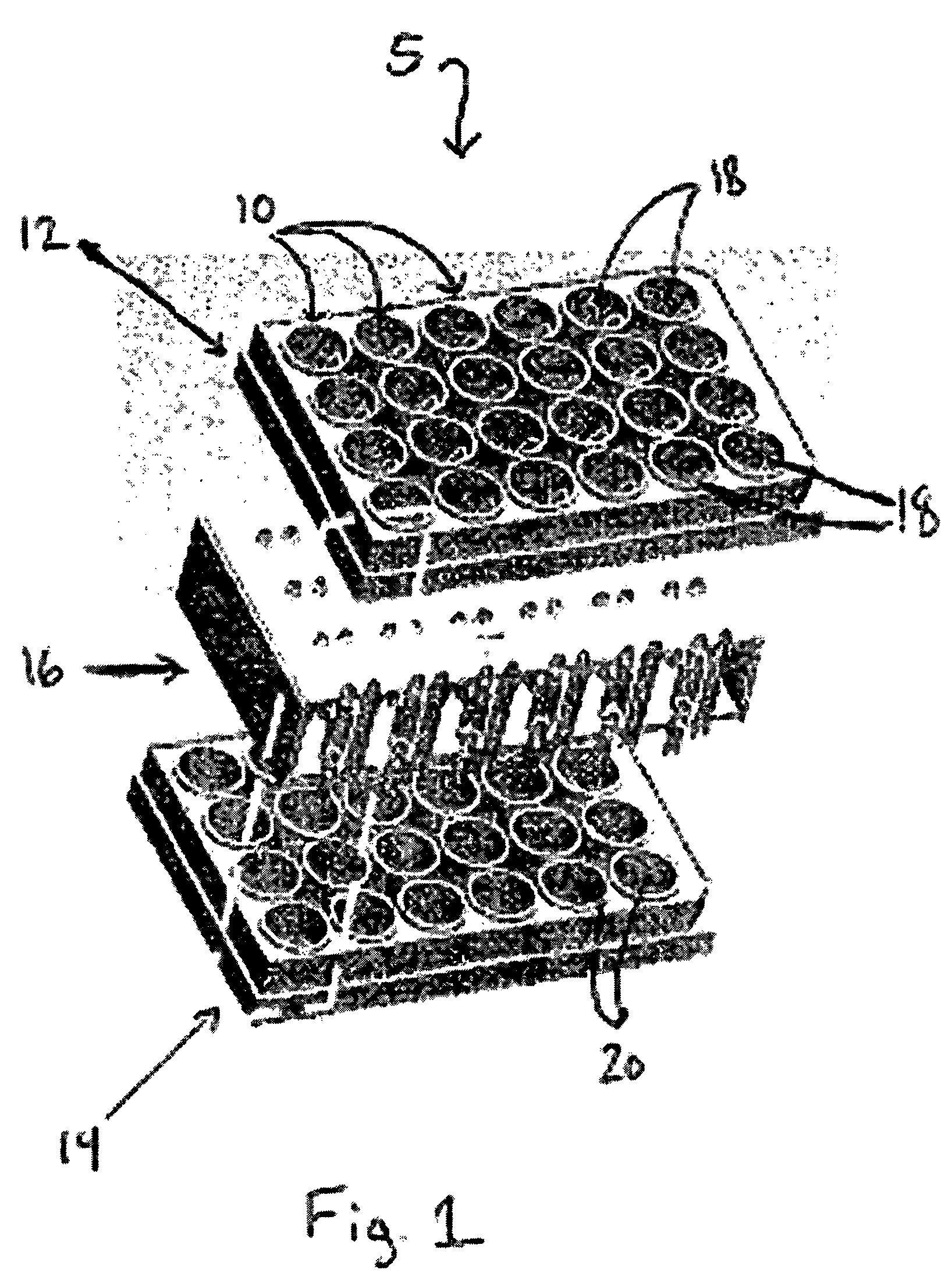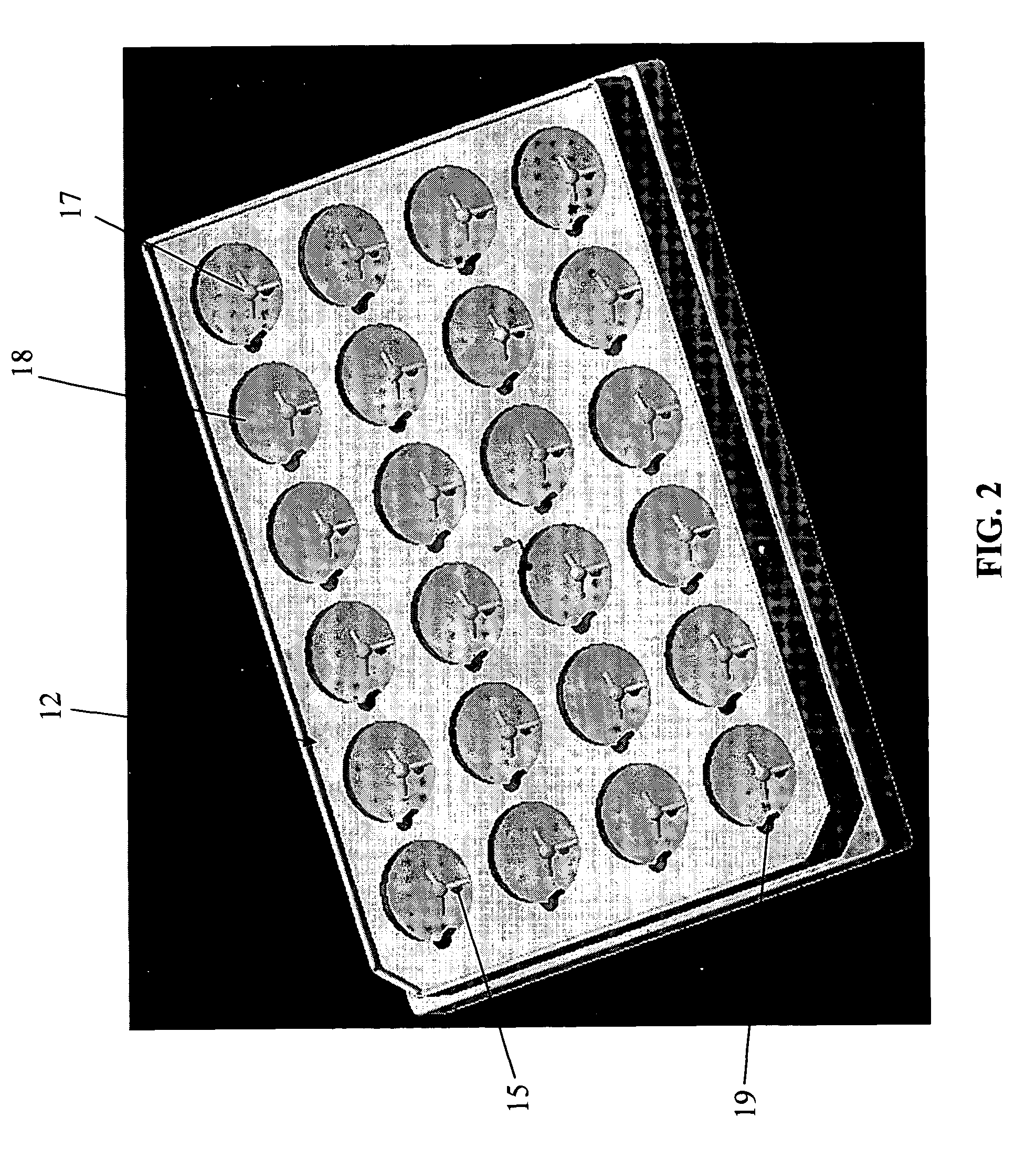Perfusion bioreactors for culturing cells
a technology of perfusion bioreactors and cells, applied in biochemical apparatus and processes, specific use bioreactors/fermenters, after-treatment of biomass, etc., can solve the problems of not being able to fully appreciate the true importance of fluid flow as an environmental signaling factor, and not being able to translate the devices used to study these environments to high throughput platforms
- Summary
- Abstract
- Description
- Claims
- Application Information
AI Technical Summary
Benefits of technology
Problems solved by technology
Method used
Image
Examples
example 1
[0060]Referring to FIG. 8, one example of a cell biology experiment performed according to the invention is shown wherein primary rat hepatocytes were seeded onto alginate scaffolds in the perfusion chamber, and cultured with Hepatostim media under perfusion flow. The same cells were also seeded onto matrigel substrates (typically known to maintain basal CYP 3A1 activity for rat hepatocytes), and passive coated collagen type 1 substrate were used as a negative control (typically known to decrease basal CYP 3A1 activity for rat hepatocytes). After 48 hours, 100 uM cortexolone was added to the media to induce CYP 3A1 expression. At weekly time points, the basal 3A1 activity was monitored by testosterone metabolism into 6B-hydroxytestosterone using HPLC analysis. The level of 6B-hydroxytestosterone in the culture is therefore indicative of CYP 3A1 expression and activity. The collagen cultures did not allow for CYP 3A1 expression, and the matrigel cultures helped the hepatocytes mainta...
example 2
[0061]Referring to FIG. 14, one example of a cell biology experiment performed according to the invention is shown wherein mouse osteoblastic cells (MC3T3s) were seeded on calcium phosphate scaffolds, and cultured with Gibco Alpha media under perfusion flow. The same cells were also seeded on calcium phosphate scaffolds in a static condition. The metabolic activity of the cells was studied via absorbance under static and perfusion conditions for a period of 15 days. After 15 days, the cells under perfusion show a statistically significant increase of 34% in metabolic activity over the cells in the static condition.
example 3
[0062]Referring to FIG. 15, one example of a cell biology experiment performed according to the invention is shown wherein human mesenchymal stem cells (MSCs) were seeded on calcium phosphate scaffolds, and cultured with Osteogenesis media under perfusion flow. The same cells were also seeded on calcium phosphate scaffolds in a static condition. The metabolic activity of the cells was studied via absorbance under static and perfusion conditions for a period of 10 days. After 10 days, the cells under perfusion show a statistically significant increase of 42% in metabolic activity over the cells in the static condition.
PUM
| Property | Measurement | Unit |
|---|---|---|
| diameters | aaaaa | aaaaa |
| structure | aaaaa | aaaaa |
| internal structure | aaaaa | aaaaa |
Abstract
Description
Claims
Application Information
 Login to View More
Login to View More - R&D
- Intellectual Property
- Life Sciences
- Materials
- Tech Scout
- Unparalleled Data Quality
- Higher Quality Content
- 60% Fewer Hallucinations
Browse by: Latest US Patents, China's latest patents, Technical Efficacy Thesaurus, Application Domain, Technology Topic, Popular Technical Reports.
© 2025 PatSnap. All rights reserved.Legal|Privacy policy|Modern Slavery Act Transparency Statement|Sitemap|About US| Contact US: help@patsnap.com



